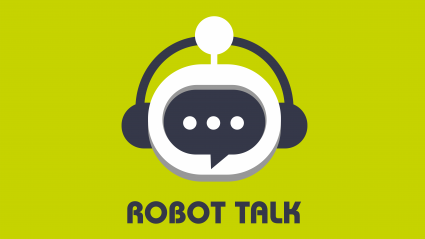A novel, human-inspired approach to training artificial intelligence (AI) systems to identify objects and navigate their surroundings could set the stage for the development of more advanced AI systems to explore extreme environments or distant worlds, according to new research.
In a study published in Cyborg Bionic Systems, researchers from Shanghai University have unveiled a new artificial intelligence framework that improves the way robots interpret and execute tasks. The "Correction and Planning with Memory Integration" (CPMI) framework leverages large language models (LLMs) to improve the efficiency and effectiveness of robots performing complex, instruction-based tasks.
Humans and robots are increasingly interacting within built environments such as cities, buildings, walkways, and parks. Offering adaptability, cost-effectiveness, and scalability, robots are gradually being integrated into various aspects of everyday life, from manufacturing to health care to hospitality.
To overcome issues associated with real-life testing, researchers successfully demonstrated the use of digital twin technology within robot simulation software in assessing a robot's suitability for deployment in simulated built environments.
As more and more people drive electric cars, congestion and queues can occur when many people need to charge at the same time. A new study shows how AI-controlled charging stations, through smart algorithms, can offer electric vehicle users personalized prices, and thus minimize both price and waiting time for customers. But the researchers point to the importance of taking the ethical issues seriously, as there is a risk that the artificial intelligence exploits information from motorists.
Researchers at Carnegie Mellon University's Robotics Institute (RI) have developed a robotic system that interactively co-paints with people. Collaborative FRIDA (CoFRIDA) can work with users of any artistic ability, inviting collaboration to create art in the real world.
With so many options available, choosing the ideal cartesian system for a specific application can feel daunting. In this article, explore 5 key considerations for simplifying the decision process when selecting the correct cartesian robot.

Claire chatted to Isabelle Ormerod from the University of Bristol all about human-centred design and women in robotics.
Isabelle Ormerod is a PhD student at Bristol Robotics Lab in the Design and Manufacturing Futures Lab. Her professional path began in the medical product design industry, where she observed firsthand the application of human factors (HF) processes for dextrous and high-risk procedures. This experience sparked her interest in leveraging data-driven HF approaches in product design. Isabelle is also part of the Leadership team of Women in Robotics UK. This organization is committed to fostering an inclusive community for women and non-binary individuals in the robotics field in the UK.
Federal regulators have given Amazon key permission that will allow it to expand its drone delivery program, the company announced Thursday.
A team of researchers have developed a new machine-learning method that detects hate speech on social media platforms with 88 per cent accuracy, saving employees from hundreds of hours of emotionally damaging work.
Cultivating creativity in schools is vital for a future driven by artificial intelligence (AI). But while teachers embrace creativity as an essential 21st century skill, a lack of valid and reliable creativity tests means schools struggle to assess student achievement. Now, a new machine-learning model is providing teachers with access to high-quality, fit-for-purpose creativity tests, that can score assessments in a fraction of the time and a fraction of the cost.
Over 100 years ago, Alexander Graham Bell asked the readers of National Geographic to do something bold and fresh—"to found a new science." He pointed out that sciences based on the measurements of sound and light already existed. But there was no science of odor. Bell asked his readers to "measure a smell."
The eyes of raptors can accurately perceive prey from kilometers away. Is it possible to model camera technology after birds' eyes? Researchers have developed a new type of camera that is inspired by the structures and functions of birds' eyes. A research team led by Prof. Kim Dae-Hyeong at the Center for Nanoparticle Research within the Institute for Basic Science (IBS), in collaboration with Prof. Song Young Min at the Gwangju Institute of Science and Technology (GIST), has developed a perovskite-based camera specializing in object detection.
In recent years, the landscape of cybersecurity has undergone significant transformation, particularly with the adoption of artificial intelligence (AI) and automation by both defenders and attackers. The ReliaQuest Annual Cyber-Threat Report: 2024 highlights an alarming trend: threat actors are increasingly […]
The post AI and Automation: A Double-Edged Sword in Cybersecurity appeared first on TechSpective.
Microsoft Build this year was all about Copilot, which will span Microsoft’s offerings. While any current computer can run Copilot, only special AI PCs run Copilot+. Copilot+ gets you to a whole different level of AI experiences that require the […]
The post Recall Is the Killer Feature in Microsoft Copilot+ appeared first on TechSpective.
